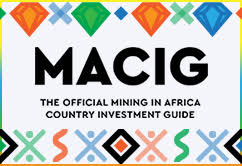FILTER
FILTERED INTERVIEW RESULTS
Hugo Solís
CEO, PEÑA COLORADA
"Peña Colorada plays a key role in Mexico’s industry, contributing to 30% of the country’s pellet production – the largest iron ore pellet producer in the country."
César Castillo Gonzáles
DIRECTOR NEGOCIO PROFESIONAL, QROMA
"Cuando la corrosión avanza, no solo compromete la integridad de los activos: puede generar paradas no programadas, pérdidas millonarias y, sobre todo, poner en riesgo la seguridad de las personas."
Andrés Souper
GENERAL MANAGER, GLENCORE CHILE
"The stability of the copper market will depend on the ability of Chile and other producers to balance growth with sustainability."
Cristóbal Schneider
CEO, PROMET
"By offering modular services, we allow for flexibility and sustainability, making investments more efficient. Instead of clients investing heavily in infrastructure they may no longer need later, we invest in scalable solutions, moving assets between projects as necessary."
Eric Smith
MANAGING DIRECTOR, CEMENTATION AMERICAS
"We are optimistic about long-term opportunities in both Ontario and the Western US. Our strategy centers around developing and maintaining capacity and preparing for when projects start flowing in."
Vincent Benoit
CEO & MANAGING PARTNER, LA MANCHA RESOURCE CAPITAL
"People tend to focus on the geopolitical and security risks in Africa and overlook the advantages – such as the fact that it takes less than a year to obtain a permit in many countries in West Africa."
Iván Arriagada
CEO, ANTOFAGASTA MINERALS
"Our priority this year is advancing brownfield projects at Los Pelambres and Centinela, alongside sustainability initiatives."
Mario Salazar
CEO, DIRAC
"One of our strategic objectives is to position Dirac more strongly in the private sector, particularly in mining, where we believe our expertise, technological acumen, and international accreditations are a perfect fit."
Paul Johnson and Bill Zisch
PRESIDENT (PJ) AND HEAD OF MINING ENGINEERING (BZ), COLORADO SCHOOL OF MINES
"The mining industry needs all types of engineers, so we are reaching out to mechanical, electrical, environmental, and computer science students as well to introduce them to career opportunities in mining."
Eduardo Rivas
GERENTE GENERAL, CELEPSA
“El contrato con Antapaccay será el mayor de nuestra cartera: con 1,000 GWh por año y 160 MW de potencia, marcará además un paso clave en su hoja de ruta de descarbonización.”




















